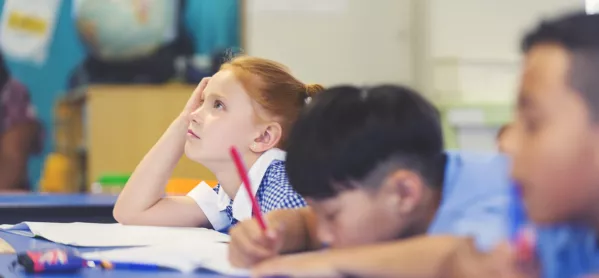Girls have widened the gap with boys in the key stage 2 Sats results, new figures reveal.
The Department for Education data published today shows 70 per cent of girls reached the expected standard in reading, writing and maths this year compared with 60 per cent of boys.
These figures increase the gender gap to 10 percentage points up from 8 percentage points last year.
Sats: Teachers’ anger over ‘bumblebee question’ marking
Results: 65% of pupils reach expected standard in three Rs
Listen: The Tes podcast on Sats results week
The statistics show that this has been driven by an increase in the gender gap in reading, with 78 per cent of girls reaching the expected standard compared to 69 per cent of boys.
However, the biggest attainment gap between girls and boys remains in writing teacher assessments - where 85 per cent of girls reached the expected standard compared with 72 per cent of boys.
The Sats were taken by around 600,000 10- and 11-year-olds in May this year.
Provisional results published in July revealed that 65 per cent of pupils reached the expected standard in reading, writing and maths.
Figures published in July revealed that 73 per cent of pupils reached the expected standard in reading, down from 75 per cent last year.
In maths, 79 per cent of pupils reached the expected standard, up from 75 per cent last year.
In spelling, punctuation and grammar, 78 per cent of pupils reached the expected standard, the same as last year.
In writing, which is assessed by teachers rather than tested, 78 per cent of pupils reached the expected standard the same as last year.
Today’s figures show that the gap between disadvantaged pupils and their peers has narrowed slightly in terms of the numbers reaching the expected standard in the three Rs.
This year, 51 per cent of disadvantaged pupils reached the expected standard in all of reading, writing and maths compared to 71 per cent of all other pupils.
The gap in attainment for the expected standard in reading, writing and maths has decreased slightly from 21 percentage points in 2016.
However, the gap in terms of pupils achieving a higher standard in the three Rs has increased from 5 per cent in 2016 to 8 per cent in 2019.
The general secretary of the NAHT headteachers’ union Paul Whiteman said that disadvantaged pupils have “been the victims of a decade of austerity”.
He added: “They have disproportionately suffered from funding cuts not just to education, but to all the wider services that should be there to help them.
“Successive governments have failed to invest in those who need it the most, and now we see the result - a sustained long term gap over many years between disadvantaged pupils and pupils from more affluent families.”
On the increasing gender gap in Sats results, he said: “There is a long-standing gender gap when it comes to reading and writing, which is certainly a concern, and is something teachers are constantly attempting to tackle.”
School standards minister Nick Gibb said he was pleased to see an increase in pupils reaching the very highest standards at the end of primary school.
He added: “The fact that the attainment gap between disadvantaged pupils and their peers has significantly reduced since 2011 illustrates how the programme of reforms we’ve put in place since 2010 is helping to level the playing field.
“We reformed key stage 2 tests in 2016 to make sure they assessed schools’ performance in equipping pupils to understand the new, improved primary curriculum. These results are testament to the hard work of pupils, parents and teachers.”




